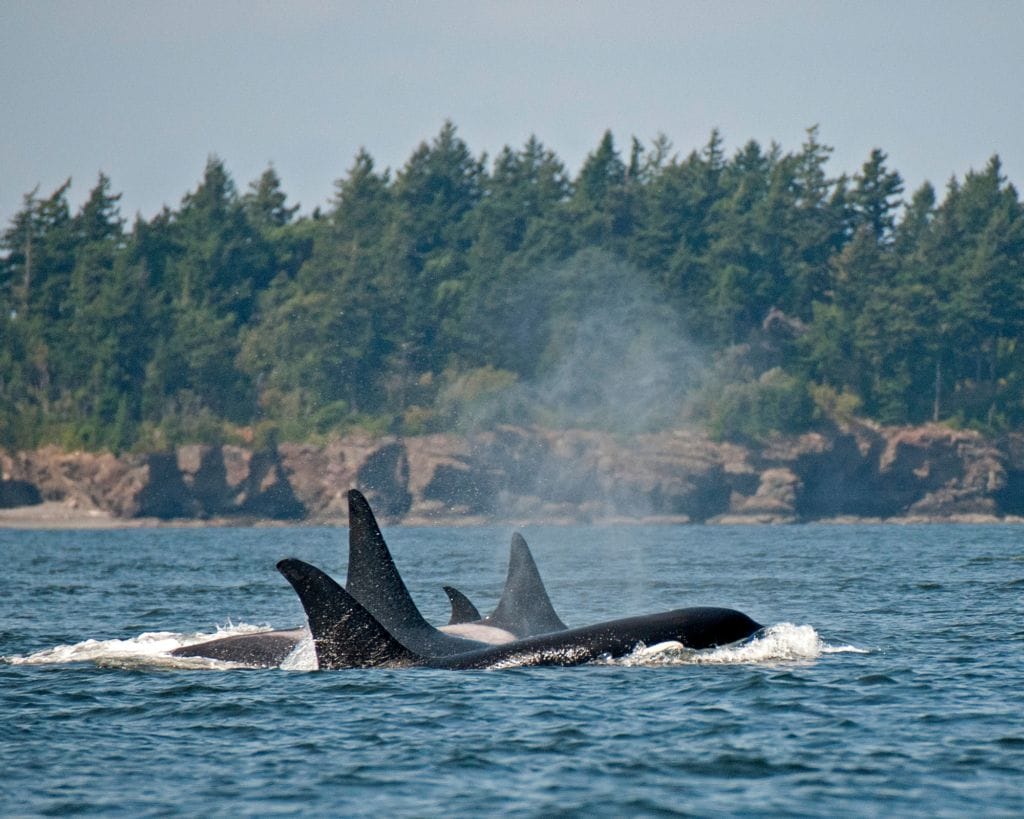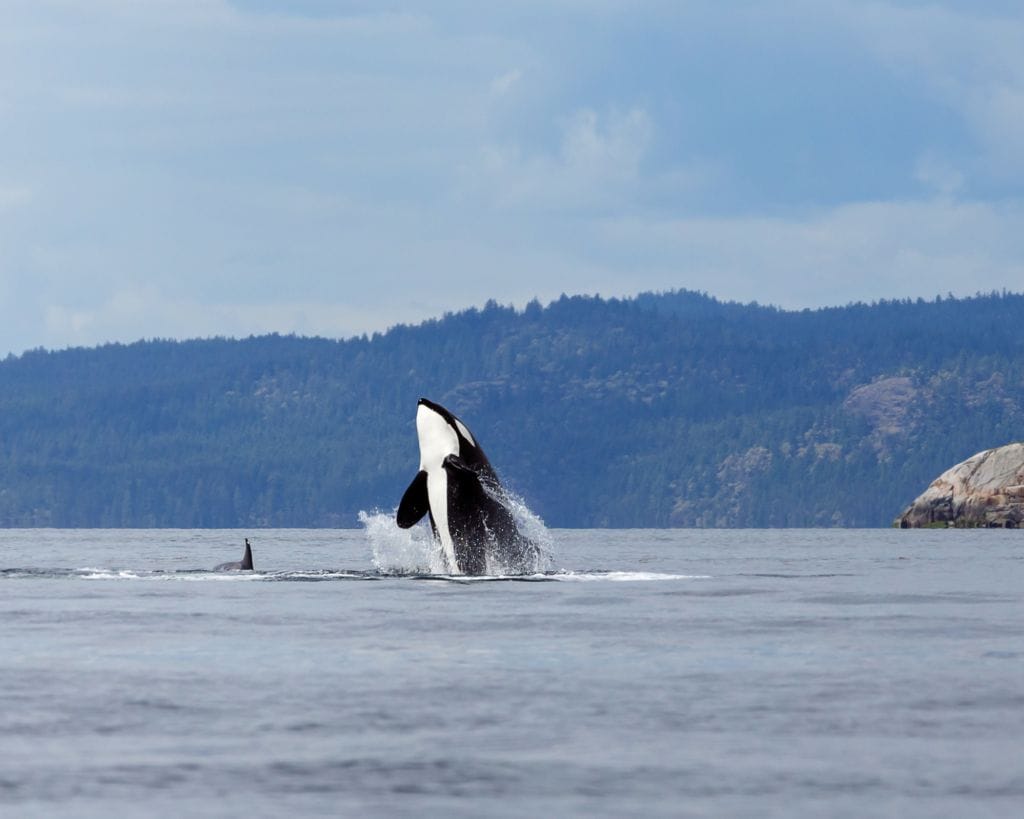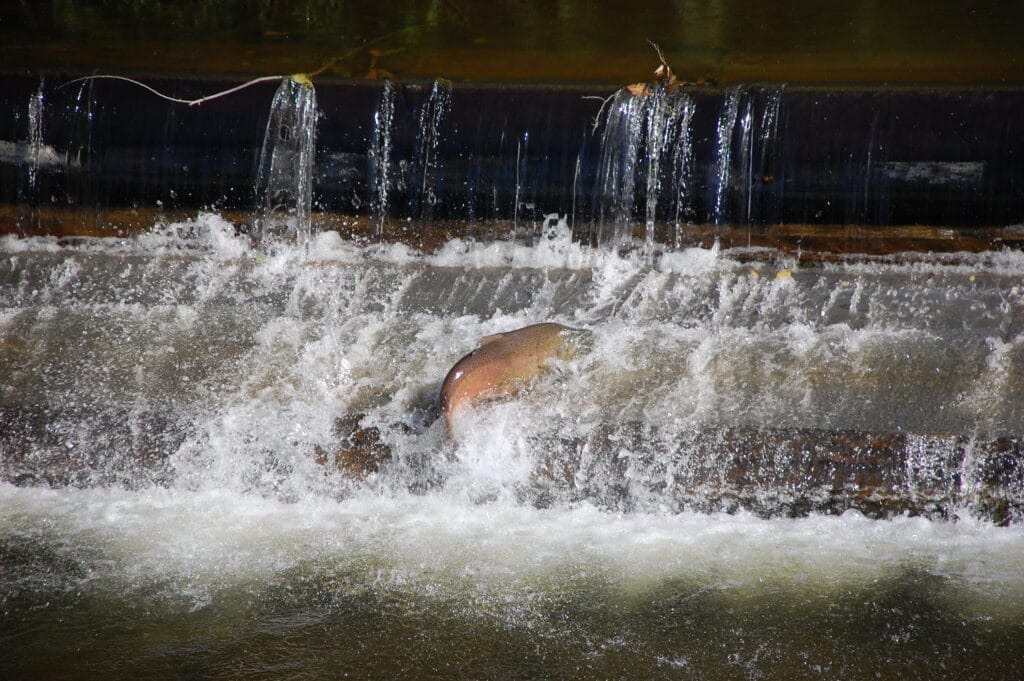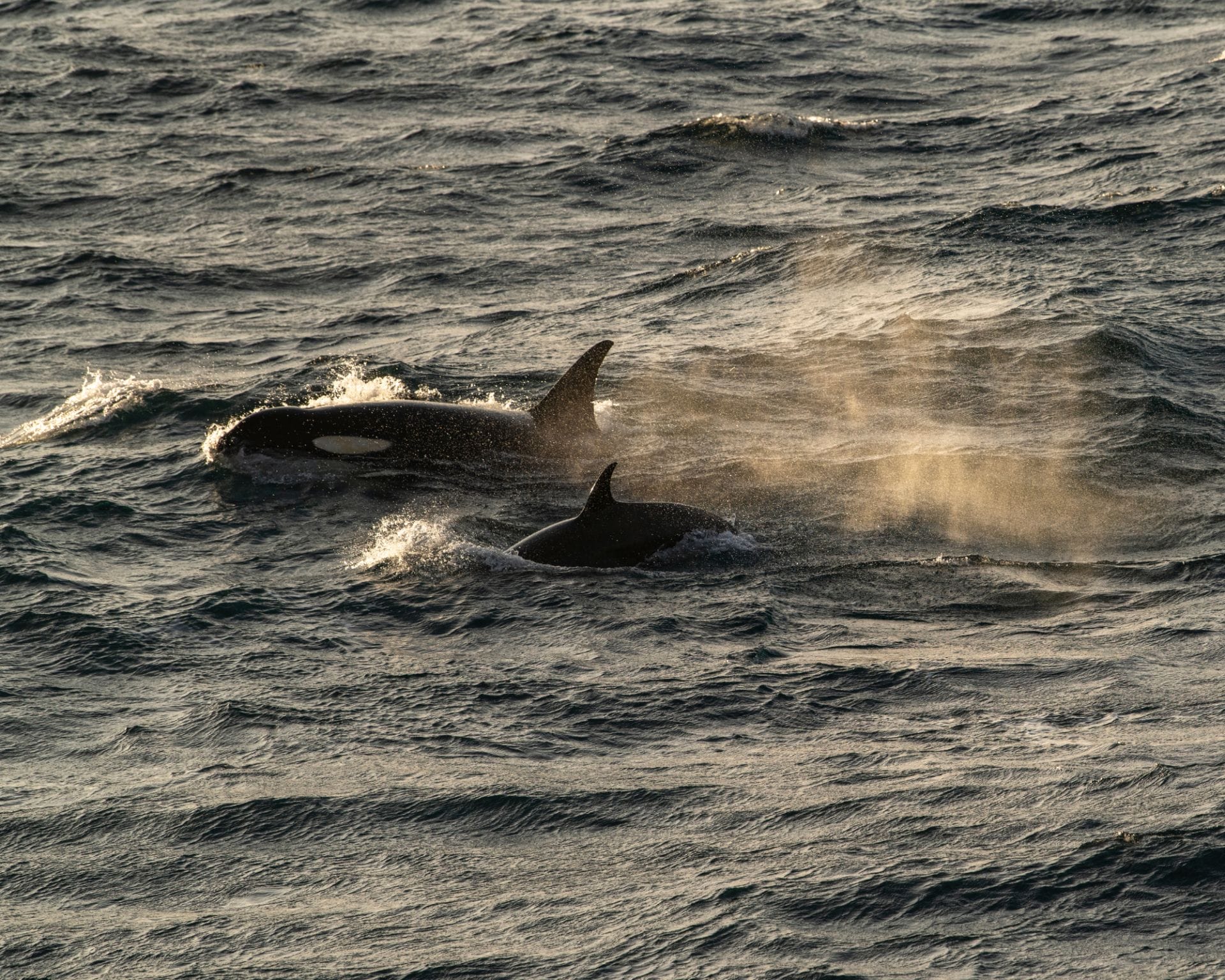The Problem With Orca Babies and Becoming Part of the Solution. A Q&A With Orca Network Educator
This is the first of a two-part series about Orca Action Month. Head over to our friends at the Maritime Washington National Heritage Area for part two.

Everyone wants to be graced by the presence of an orca at least once in their lifetime, and many will do whatever it takes to see one. Even if it means taking the same boat ride dozens of times or peering into the inner edges of binoculars while standing in whale-watching spots the internet swears by.
But if people spent the same amount of time getting to know their ecosystems and how to support them, they might just increase their chances of catching a fin above water. That’s why researchers and educators have focused their efforts on turning the curious into orca citizen scientists and land-based conservationists.
Orca Network Educator and Coordinator Stephanie Raymond and her colleagues have spent years getting visitors and residents alike to spot orcas for a purpose. They’ve led various educational programs and initiatives like the Whale Sighting Network, a data trove driven by citizen scientists whose sightings have bolstered the research field with decades of pertinent data.
Stephanie and her teammates use a variety of ways to get folks excited about the inner lives of these creatures to get them hooked on the science of helping them survive. The recently reinstated Washington State Ferries Naturalist Program which gets dedicated expert volunteers riding ferry routes across Puget Sound and the San Juan Islands to provide passengers with educational information about local marine mammals, the challenges they face, and the actions we can take to protect their habitat.
Whether it’s a classroom full of young minds or a ferry full of curious travelers, Stephanie wants the same thing for anyone learning about these enigmatic creatures: to know that they are the missing link in the salmon-to-orca connection that keeps nature in balance.

Q: Why is Orca Action Month important?
A: Orca Action Month is a dedicated month aimed at raising awareness about orcas through various events, activities, and publicity. It serves as an opportunity to learn about the current state of orcas, understand the challenges they face, and explore ways in which we can help. The month brings together researchers, elected officials, and all those who love orcas to celebrate the presence of these magnificent animals in our environment.
Q: What is the current state of Southern resident orcas in the Puget Sound?
A: There’s only 73 of these individuals left but all of them are childbearing years. We know there’s lots of pregnancies but there’s not a lot of live births. The live births really require salmon to sustain them, and it takes so much energy to grow another whale. It’s a very challenged population. It’s not hopeless, but what we see is that we really, really need salmon for them to sustain pregnancies.
Q: Is there a correlation between salmon population rates and orca births?
A: Yes, there is a clear correlation between salmon runs, specifically Chinook salmon, and the birth rate of orcas. Our Southern resident orcas heavily rely on Chinook salmon as their primary food source. When there is a good Chinook run, there is an increase in orca births. They weren’t using this area the same way that they did before, and it really seems tied to the decline in the salmon population.
Q: How do we know all of this?
A: Through the use of innovative research methods, researchers can gather genetic and hormonal information. This enables them to determine pregnancies even if they cannot visually spot them from drones. Although there are numerous pregnancies observed within the population, there is a scarcity of live births. The successful birth of calves requires sufficient salmon to sustain the energy needed for the growth of another whale, similar to the energy demands experienced by pregnant women.

Q: Why is it important for folks to report their sightings to the Whale Sighting Network?
A: Being able to track that and recognize how these different individual whales are using the same places over and over again and who they’re associating with or not has really been an important piece of data collection for researchers. The data from the whale sighting network is available to anyone, including researchers who can utilize it for various projects. The network’s mission is to make the data accessible for research purposes. The South Sound area lacked comprehensive data until the whale sighting network began 22 years ago. The network has experienced significant growth, especially during the pandemic when more people ventured out to observe whales and contributed sighting reports. This exponential growth has expanded the coverage of Puget Sound, providing valuable information on not just orcas but also gray whales, humpback whales, and minke whales.
Q: What are some key factors influencing the health and abundance of salmon populations in the Puget Sound, apart from stormwater?
A: One significant factor is the availability of forage fish habitat. Shoreline development and the construction of docks or sea walls have negatively affected the habitats of forage fish such as eelgrass beds or fine sand and gravel in the intertidal areas. Additionally, many existing sea walls were not constructed with consideration for the impact on these habitats. The decline of certain forage fish species, like herring, can have long-term effects as they are preferred food sources for species like Chinook salmon.
Another factor is climate change. Rising water temperatures in streams can be detrimental to the survival of juvenile salmon, as they require high levels of dissolved oxygen. Warmer water holds less oxygen, which can lead to poor escapement and lower salmon returns. Extreme events like heat domes can further exacerbate these issues and threaten salmon populations.
Stream passage is also a significant concern. Dams on rivers, both existing and proposed, can hinder salmon migration. Moreover, many culverts under roads have been constructed without considering salmon passage, leading to further barriers. Efforts to improve salmon passage have been made, including legal actions to protect treaty rights, but these projects require time, funding, and coordination at the municipal level.

Q: What are ways we can help mitigate climate change-related impacts to salmon survival?
Everybody likes a view of the water, but I like to encourage people to make it a view of water and trees. By decreasing temperatures around in-stream habitats. One of the big ones is just making sure that vegetation is maintained along the shorelines. If you have any sort of water, even if it’s a lake or saltwater shoreline, it turns out that a surprising amount of the food of juvenile Chinook salmon is terrestrial insects. They need habitat and when that habitat has vegetation overhanging the streams, that’s a perfect setup for the shade to cool the streams.
Q: Have there been successful restoration projects that have improved salmon populations?
A: One example is the restoration project at Herrings House Park and Terminal 105, located across from the Duwamish Longhouse. This project created a spot where baby salmon can adjust to changes in salinity as they come downstream. The restoration efforts not only benefit the salmon but also attract various bird species like ospreys and mammals like seals and sea lions. You see more than just the salmon returning. And it’s really great to see it.
Q: What are active ways communities can contribute to the conservation and protection of salmon habitats in this area?
A: By learning about the salmon life cycle and understanding the impact of individual actions, such as avoiding harmful chemicals from reaching the waterways. Conservation practices like conserving resources, using public transportation, planting trees, and participating in volunteer projects can make a difference.
Whatever you’re putting into the water, indoors or outdoors, has an impact. If you recognize your actions are having that impact, that gives you a lot of power to make decisions about what you’re doing in a way that prevents things from going in the water that we don’t want to go there.





